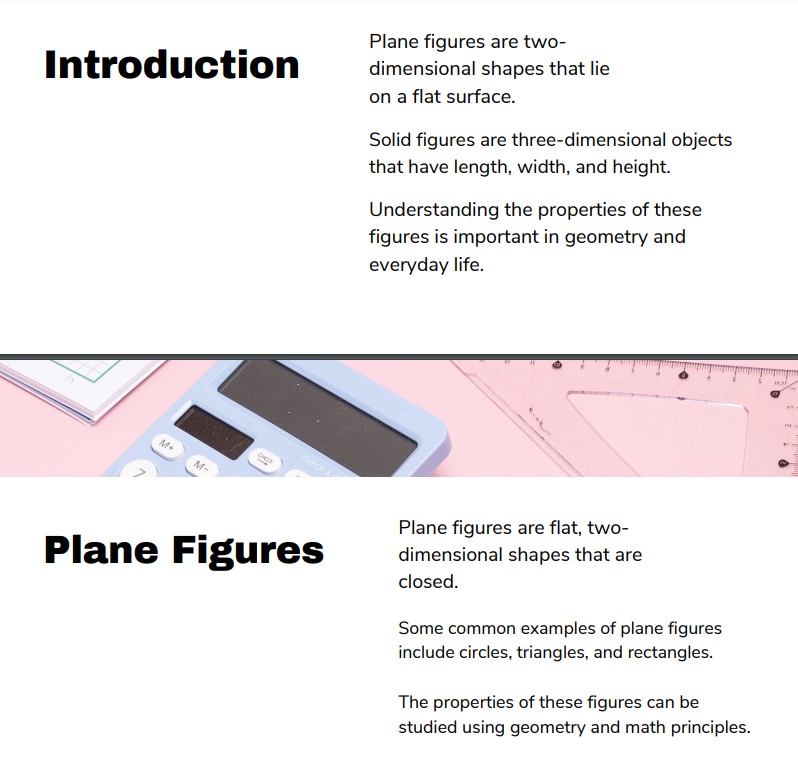Planes and Solid Figures in Math
Summary:
The Planes and Solid Figures in Math note introduce the concepts of the plane and solid figures in geometry. Plane figures are two-dimensional shapes lying on a flat surface, while solid figures are three-dimensional objects with length, width, and height. Understanding the properties of these figures is important both in geometry and everyday life.
Plane figures, such as circles, triangles, squares, rectangles, and parallelograms, are flat and closed shapes. Their properties can be studied using geometry and mathematical principles.
Solid figures, on the other hand, have three dimensions and include shapes like cubes, spheres, cylinders, and pyramids. They can be classified based on their faces, edges, and vertices. For example, a cube has 12 edges, 8 vertices, and 6 faces, all of which are squares. It is considered a regular solid figure.
The knowledge of planes and solid figures finds practical applications in various fields, including architecture. Architects use these figures to design buildings, create blueprints, and develop scale models of structures.
In conclusion, understanding the properties of planes and solid figures is essential in geometry and has real-life applications, such as in architectural design.
Excerpt:
Planes and Solid Figures in Math
Introduction
- Plane figures are two-dimensional shapes that lie on a flat surface.
- Solid figures are three-dimensional objects that have length, width, and height.
- Understanding the properties of these figures is important in geometry and everyday life
Plane Figures
- Plane figures are flat, two-dimensional shapes that are closed.
Some common examples of plane figures include circles, triangles, and rectangles.
The properties of these figures can be studied using geometry and math principles.
Solid Figures
- Solid figures have three dimensions: length, width and height.
- Examples of solid figures include cubes, spheres, cylinders and pyramids.
- Solid figures can be classified based on their faces, edges, and vertice
Properties of Plane Figures
Plane figures have only two dimensions: length and width. Examples include triangles, squares, rectangles,
parallelograms, and circles.


Reviews